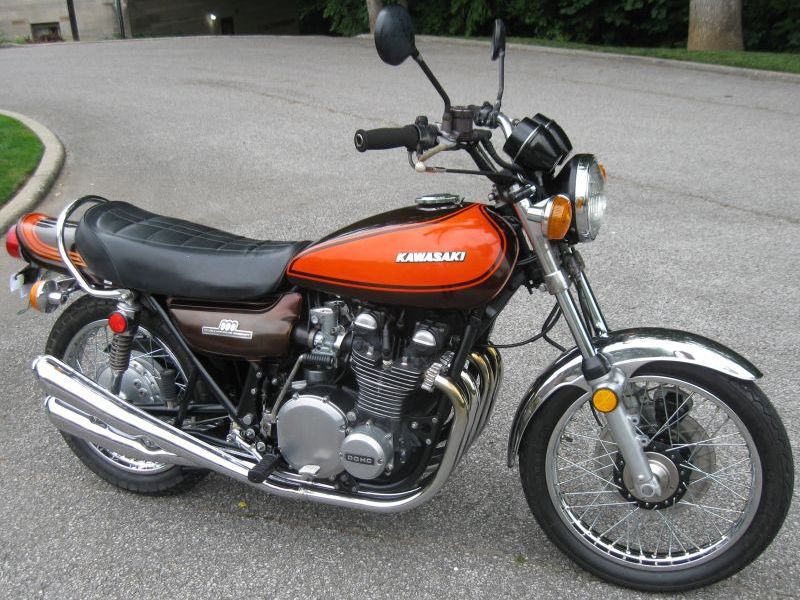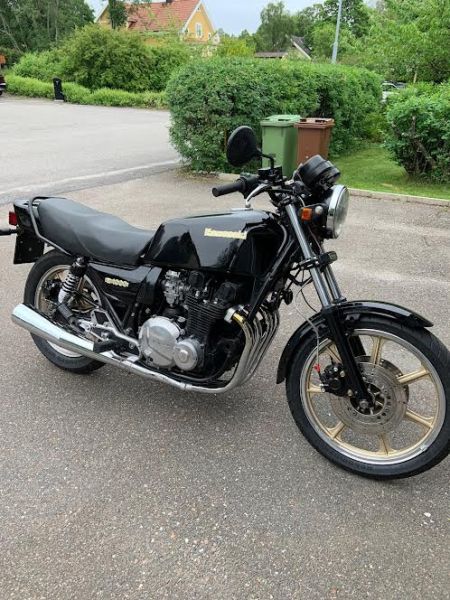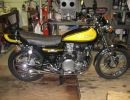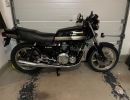Bud,
exactly... materials and workmanship.
You also have to remember that how a car gets used (or abused) will have an effect on how well the paint holds up. Classic cars, show cars, infrequently driven cars will all be better off.
Apeman,
I can't disagree there. Duplicolor, and other spray can paints are not gonna hold up. To me, that wasn't the issue here. The issue was, whether a professional repaint is more durable than a factory finish.
To all,
As far as recreating factory paint process, it can be done, is being done, and still isn't the right way.
I'll break this all down here...
First let's examine the key elements of durability I meantion in a previous post.
UV Protection-
The ability of a paint to resist the effects of sun damage are of utmost importance, as most vehicles are exposed to direct sunlight most of the day. For a paint to be durable, it has to withstand this bombardment of UV light without cracking, peeling, discoloration, fading etc... Among the best paints for this are Urethane based paints. The worst... acrylic laquer.
Porousness-
Steel and aluminum are susceptable to corrosion, and keeping oxygen away from the metal is also a key factor in whether or not a paint will perform well. Most paints, especially enamel based paints are very porous and allow water and oxygen to reach the metal underneath. This creates oxidation of the surface, and that leads to staining, bubbling, adhesion problems, and paint surface oxidation. Look at a mid 80's Chevy blazer with original single stage paint. The paint gets a haze to it that must be cut and buffed off to regain the luster of the paint. This type of oxidation is often confused for a heavily scratched or mistreated clearcoat on newer vehicles. Automatic brush carwashes, drying the surface with papertowels, using snow brooms can all lead to the same look of "dull."
Anti-Corrosive Capabilities-
A lot of old repair work on cars only used a single build type primer to level the final surface prior to painting. This primer/surfacer was prone to absorbing water, as are some polyester bodyfillers. In order to repair something correctly with long lasting results, the technician would have to apply 2 types of primers to the surface. One for sealing the metal, and one with high-film-build characteristics to be used for leveling the surface. Recently, a new group of DTM primers have been able to combine the 2 separate priming operations into 1 step, by use of a anti-corrosive additive, and waterproof characteristics. These DTM or "Direct-To-Metal" primers are key to keeping the paint from oxidizing, rust staining, bubbling, or from having adhesion problems.
Self-Etching DTM Capabilities-
The term gets thrown around quite loosely, but I'll give a brief description of what self etchign actually means.
In order to have good adhesion to metal, the surface must no be shiney, or smooth, but rather, needs to be sanded or scuffed up until it's completely dull or void of reflection. As all new cars are not first sanded prior to applying any paint, they needed an additive to the primer that would etch the metal for better adhesion. hence the term, "self-etching" primer. In order to have proper adhesion, the "self-etching" primer must contain LEAD or a similiar etching additive. now that lead is out of all paint, their "Self-etching" qualities have gone downhill. Another main concern with a primer is whether or not it will adhere to the final paint well. EX. look at any 1987-1993 GM Grand Am - Cavalier - Chrysler minivan. Notice paint coming loose from the hood and roof panels? notice that the gray primer is still intact underneath the flaking paint? Just by looking at any of these vehicles, you can tell that adhesion to the paint is as important as adhesion to the substrate.
Catylization-
Among the best blunders of older paint systems is the lack of any type of catylization. Catylized paint is a 2 part mixture. The extra additive(or catylist) reacts with the paint so that when the chemical reaction is complete, it changes the make-up and with paint, does so to give it extra strength, and quicker drying times. without a catylist, paint that is dry is just as it was when it was liquid in the can. It can easily be stained by gasoline and other chemicals, and provides less UV protection. A key factor to whether or not the factory paint on your vehicle is of any quality is catylization of the paint.
finally...
SURFACE PREPARATION-
I saved this one for last because it trumps most of the others. Without proper surface preparation, even the best of paintjobs can be short lived. Whether or not the metal was properly cleaned (example 1981-1987 Ford E,F series all have big rust scabs along the sides of the body, because the metal was rusting before it was painted), whether or not the metal was scuffed, what type of self-etching primer was used, whether or not the primer was retouched after initial application, what type of sanding was done to the metal(wet or dry), whether the primer sanding dust properly removed, whether the climate was properly controlled, and whether or not the metal tempurature matched the air tempurature all effect the final finish and durability of the paint.
Now that you know what makes or breaks a paint job, let me explain fully why factory paint is inferior to a QUALITY repaint.
here's how the factory paints a gas tank.
bare metal is dipped to remove any surface contamination, and oxidation, then, the tank is hung up, and sprayed with a base coat of either gray, or gray metallic. then, the tank continues down the line, air and heat light drying, until it reaches the second stage where it is painted with a tinted clearcoat. Then it air dries and heat lamp dries more, and is painted with clearcoat, then heat and air...
That's it.
no sealers, primers, sanding, scuffing nothing.
The paint is not even catylized.
now, how I paint a gas tank.
depending on condition, I may use a couple different techniques but all will give the same result... Bare steel that is scuffed up and degreased to recieve anti-corrosive DTM Catylized primer. Once the tank is in primer, I will sand it out to shape it and scuff the primer to receive the final paint. Then the tank is thoroughly dried, masked off if nessesary, and sprayed with the various coats. All coats are sprayed on with catylized urethane basecoat, and urethane or polyurethane clearcoats.
The differences are important to the final product.
differences:
factory- no sealers or anti-corrosive primers
repaint- epoxy primer(lead based is still available through Matrix) or DTM anti-corrosive primer
factory- no scuffing of the bare steel
repaint- bare steel is properly sanded and scuffed for maximum adhesion
factory- paint is non-catylist enamel (pre 1986)
repaint- paint is catylized urethane or polyurethane
does this make sense?
The other thing that I must point out is.
repaints get a bad rap because of shoddy workmanship or poor quality materials.
someone said, "out of the millions of repaints I have seen, 99% are bad"
When in reality, the millions of repaints they have seen where obviously bad enough to know they were repaints. Out of the millions of cars they have seen, how many did have paint work done, but it went unnoticeable? How many cars have paint work done that is unnoticeable? I have even had customers argue with me about their vehicles, insisting I never did any repair work to them, when in reality, I have, they just forgot about it, because it is not noticeable at any length. Cars are measured in millimeters now, paint is matched by VIN number as well as paint code, technology is far superior today than is was just 10 years ago. For anyone to argue that paint applied in 1978 is superior to paint designed in 2003 is not presenting a good arguement. Just saying that "because I have seen bad repaints, or had bad experiences" is not a valid argument for or against repainting. That would be like someone saying that life-flight helicopters are inferior to ambulances because they keep seeing them crashed on the news. How many life-flight rescues were performed without oru knowledge? 2 per week? 5 per week? 10 per week? How many times do we hear about a crash? 1 per year? The news doesn't report on all the successful flights, just the unsuccessful ones. To say that all life-flight helicopters are evil because a few pilots or weather conditions were bad is just not valid. The same goes for paint jobs. If a shop paints on 10 cars per week (about average) and only one has a noticeable flaw per month, that's 1 out of every 40. So, if you notice the flaw in the 1, but the other 39 go undetectable, then why now is it that all of the repaints are bad?
 Slayer61's GPZ1100 BOTM August '24
Slayer61's GPZ1100 BOTM August '24 Slayer61's GPZ1100 BOTM August '24
Slayer61's GPZ1100 BOTM August '24




































































